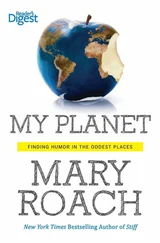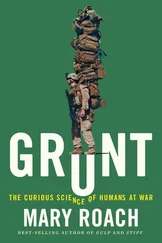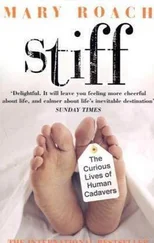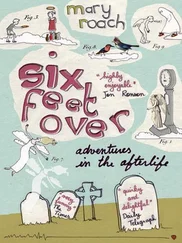We live in a culture in which, more and more, people live through simulations. We travel via satellite technology, we socialize on computers. You can tour the Sea of Tranquility on Google Moon and visit the Taj Mahal via Street View. Anime fans in Japan have been petitioning the government for the right to legally marry a two-dimensional character. Fundraising has begun on a $1.6 billion resort in the rim of a simulated Martian crater in the desert outside Las Vegas. (They can’t simulate Martian gravity, but the boots of the spacesuits will be “a little more bouncy.”) No one goes out to play anymore. Simulation is becoming reality.
But it isn’t anything like reality. Ask an M.D. who spent a year dissecting a human form tendon by gland by nerve, whether learning anatomy on a computer simulation would be comparable. Ask an astronaut whether taking part in a space simulation is anything like being in space. What’s different? Sweat, risk, uncertainty, inconvenience. But also, awe. Pride. Something ineffably splendid and stirring. One day at Johnson Space Center, I visited Mike Zolensky, the curator of cosmic dust and one of the caretakers of NASA’s meteorite collection. Every now and then, a piece of asteroid slams into Mars hard enough that the impact hurls small chunks of the Martian surface way out into space, where they continue to travel until they are snagged by some other planet’s gravitational pull. Occasionally that planet is Earth. Zolensky opened a case and lifted out a Martian meteorite as heavy as a bowling ball and handed it to me. I stood there taking in its hardness and heft, its realness, making an expression that I’m sure I’d never before had call to make. The meteorite wasn’t beautiful or exotic-looking. Give me a chunk of asphalt and some shoe polish and I can make you a simulated Mars meteorite. What I can’t possibly simulate for you is the feeling of holding a 20-pound divot of Mars in your hands.
The nobility of the human spirit grows harder for me to believe in. War, zealotry, greed, malls, narcissism. I see a backhanded nobility in excessive, impractical outlays of cash prompted by nothing loftier than a species joining hands and saying “I bet we can do this.” Yes, the money could be better spent on Earth. But would it? Since when has money saved by government red-lining been spent on education and cancer research? It is always squandered. Let’s squander some on Mars. Let’s go out and play.
The first time I visited Johnson Space Center, a sign near the door of the public affairs building said, HARD HAT REQUIRED. And it kind of was. A lot of No’s got lobbed my way. Space agencies keep a firm grip on their public image, and it’s less troublesome for employees and contractors to say no to someone like me than to take their chances and see what I write. Happily there are people involved in the human side of space exploration who see value in unconventional coverage (or are just plain too nice to say no). For their candor and wit—and the generosity with which they shared their time and know-how—super-galactic thanks to John Bolte, Charles Bourland, James Broyan, John Charles, Tom Chase, Jon Clark, Sherwin Gormly, Ralph Harvey, Norbert Kraft, Rene Martinez, Joe Neigut, Don Rethke, and Scott Weinstein; astronauts Roger Crouch, Jim Lovell, Lee Morin, Mike Mullane, Andy Thomas, and Peggy Whitson; and in Russia, cosmonauts Sergei Krikalyov, Alexandr Laveikin, Yuri Romanenko, and Boris Volynov.
I have no background in space or aeromedical matters. Many of the people I spoke to were not so much sources as unpaid tutors. I am talking about Dennis Carter, Pat Cowings, Seth Donahue, George Fahey, Brian Glass, Dustin Gohmert, Sean Hayes, Toby Hayes, Natsuhiko Inoue, Nick Kanas, Tom Lang, Pascal Lee, Jim Leyden, Marcelo Vazquez, April Ronca, Charles Oman, Brett Ringger, Shoichi Tachibana, Art Thompson, Nick Wilkinson, and Mike Zolensky. All spent more time with me than they had to spare, and for this I am truly grateful.
Terry Sunday’s tremendous expertise and thoughtful, thorough review of the manuscript and Linda Wang’s knowledge of congressional archives were indispensable. For their insights into things that happened long ago, I am grateful to Bill Britz, Earl Cline, Jerry Fineg, Dan Fulgham, Wayne Mattson, Joe McMann, May O’Hara, Rudy Purificato, and Michael Smith. Pam Baskins, Simone Garneau, Jenny Gaultier, Amy Ross, Andy Turnage, and Violet Blue provided valuable contacts and assistance, and I thank them too.
Though the public affairs people could not always help in the ways I naively wanted them to, they were extremely knowledgeable and professional. Aaisha Ali, Gayle Frere, James Hartsfield, and Lynnette Madison of the Johnson Space Center were especially attentive, as was Kathryn Major of the National Space Biomedical Research Institute and Trish Medalen at Red Bull. Kumiko Tanabe of the Japan Aerospace Exploration Agency worked miracles on my behalf. I’d also like to acknowledge the people who put together NASA’s oral history and Lunar Surface Journal projects and the oral history program at the New Mexico Museum of Space History, as well as the staff of the Interlibrary Loan department of the San Francisco Public Library. These are incomparable resources.
Lena Yakovlena, Sayuri Kanamori, and Manami Tamaoki were not only brilliant interpreters but unbeatable travel companions. I am extremely fortunate that Fred Wiemer was available to copy edit both this and my previous book. Thanks to designer Jamie Keenan for another perfect and witty cover; to curator Deirdre O’Dwyer for the hours spent stalking obscure photos and rights; to the fabulous Kristen Engelhardt for spot translations; to the bed-resters for their boundless good humor; to Jeff Greenwald for books, gin, and enthusiasm; and to Dan Menaker for the best line in the book.
As with all my books, any success must be attributed in large part to the collective publishing chops of W. W. Norton. With the help of a dorky rocket metaphor, I would like to single a few people out. My incomparable editor Jill Bialosky deftly steered the manuscript through some needed midcourse corrections, and Rebecca Carlisle, Erin Sinesky Lovett, and Steve Colca expertly managed launch and trajectory of the finished product.
My husband Ed Rachles and my agent Jay Mandel gracefully defused the angst and whinging pessimism that are an inevitable part of all my ventures. I don’t think I could do what I do without the support of these two excellent people.
1949
Rhesus monkey Albert II becomes first creature to experience zero gravity on board a rocket.
1950–1958
Air Force flies planes in parabolas to mimic zero G and study its effects on chimps, cats, humans.
Nov. 1957
Soviet dog Laika orbits Earth, dies in space.
Aug. 1960
Soviet dogs Belka and Strelka are first to return alive from orbit.
Mercury Space Program Era 1961–1963
Jan. 31, 1961
Astrochimp Ham survives a suborbital flight in a Mercury space capsule.
April 12, 1961
Yuri Gagarin becomes the first human in space, and first human to orbit Earth.
May 5, 1961
Alan Shepard becomes first American in space.
Nov. 29, 1961
Astrochimp Enos orbits Earth.
Feb. 20, 1962
John Glenn becomes the first American to orbit Earth.
Gemini Space Flights 1965–1966
1965–1966
Air Force tests Gemini diets and “restricted bathing” regimens in space cabin simulators.
Mar. 18, 1965
Alexei Leonov becomes first astronaut to spacewalk outside spacecraft.
Читать дальше












